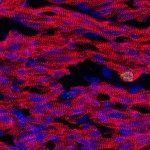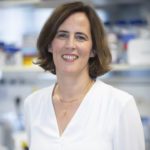Link to Pubmed [PMID] – 35026527
Link to HAL – pasteur-03851126
Link to DOI – 10.1016/j.gde.2021.101896
Current Opinion in Genetics and Development, 2022, 73, pp.101896. ⟨10.1016/j.gde.2021.101896⟩
As other tubular organs, the embryonic heart develops from an epithelial sheet of cells, referred to as the heart field. The second heart field, which lies in the dorsal pericardial wall, constitutes a transient cell reservoir, integrating patterning and polarity cues. Conditional mutants have shown that impairment of the epithelial architecture of the second heart field is associated with congenital heart defects. Here, taking the mouse as a model, we review the epithelial properties of the second heart field and how they are modulated upon cardiomyocyte differentiation. Compared to other cases of tubulogenesis, the cellular dynamics in the second heart field are only beginning to be revealed. A challenge for the future will be to unravel key physical forces driving heart tube morphogenesis.


